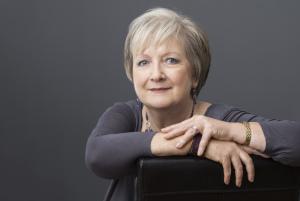 With scorching weather and the start of the school holidays here in the UK, this is the time many of us relish losing ourselves in a good book, whether we’re staying put or getting away. The term Summer Reads means different things to different people and although I use it for one of my two big selections of the year, the truth is that I’m hoping for the same things whatever the season.
With scorching weather and the start of the school holidays here in the UK, this is the time many of us relish losing ourselves in a good book, whether we’re staying put or getting away. The term Summer Reads means different things to different people and although I use it for one of my two big selections of the year, the truth is that I’m hoping for the same things whatever the season.
If anything, I’m looking for something extra: a genuinely transporting quality that can come from the story, the period, very often the setting, and ideally all of the above, as with today’s featured title The Years That Followed. It is the tenth novel by Irish author Catherine Dunne, whose other work I will definitely be seeking out. In today’s Writers on Location she explains how the relatively unknown Spanish region of Extremadura crept first into her story, then her heart. (My review follows):
I met Russell Banks, about ten years ago. His novel The Darling had just been published. The narrative was set partly in Liberia, a county mired in an endless civil war. His depiction of the brutalities of the conflict in that extraordinary country were chilling. I asked him how he had had the courage to go there. ‘I never set foot in Liberia,’ he said. ‘I just imagined myself there.’

For my sixth novel, At a Time Like This, I made one of my misbehaving characters flee to the sunshine of Tuscany. Italian readers congratulated me on the authenticity of my descriptions. I had never been to Tuscany. Reading about it, poring over photographs, speaking to people who’d traveled there: these are all powerful resources when coupled with the power of the writer’s imagination.
On that occasion at least, my not going to Tuscany meant that my writing was in no danger of being constrained by reality: I was able to create magic, my own unique Tuscany, my character’s personal fantasy. It was an enjoyable challenge – as well as a lesson: sometimes, writing about what you don’t know is better than writing about what you do. By ‘better’ I mean that all familiarity is stripped away, all memory. What’s left is a distillation of experience. The essence of something is reached with the help of the unconscious.
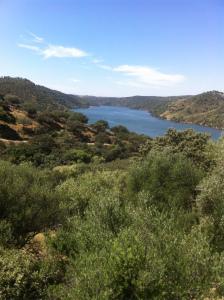
With my most recent novel The Years That Followed those demands became insistent early on. I’d set out to write the story of Calista and Alexandros – a modern-day couple whose lives mirror those of the Greek myth of Clytemnestra and Agamemon – when I felt someone tapping on the shoulder of my imagination.
I turned to see a lovely young woman, no more than seventeen, with dark eyes, dark hair and an attitude that breathed defiance. ‘My name is Pilar,’ she said. ‘This is my story, too. And I’m from Extremadura. Write me.’
This happens to writers all the time. A character comes out of nowhere and demands to be heard: a character not necessarily part of the initial creative surge that gives birth to each new story. But of course, all of our characters come from somewhere: the unknown, mysterious part that is beyond reason and explanation. I ignored Pilar at first, but she became more insistent. She won me over in the end as such characters usually do, by the sheer force of her tenacity.
I had to change my plans. I already knew Calista well: we’d been living with each other for years. I’d always intended to go to Cyprus, where I’d sent her and Alexandros to live after their marriage. But now another, different location felt more urgent: first, I needed to go to Extremadura. I needed to be with Pilar.
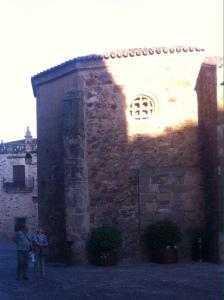
The moment I arrived, I knew I’d made the right decision. I was breathing Pilar’s air, seeing her home place through her eyes, feeling the texture of her daily life. I had to imagine the 1950s there, of course – the past is indeed ‘another country’ – but the wild landscape, the charm of the cities, the slow and murmurous pace of life: all of these made Pilar live in my imagination in a way that was new and intimate and intense.
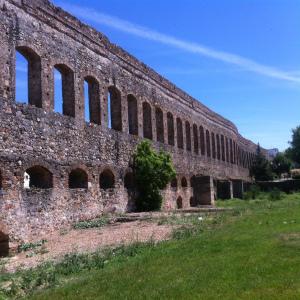
By the time I left Extremadura, I knew Pilar better. I understood her, and her need to escape to Madrid and forge a new life for herself. We would spend another year together before I finally published The Years That Followed.
It was hard to let her go. Some days, I still miss her.
Thank you to Catherine for a wonderful piece that says so much about process and character as well as her discovery of Extremadura.
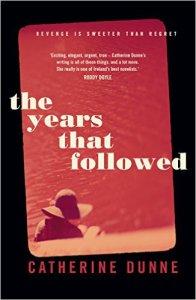
This sounded completely my kind of book – in fact, it was a tip-off from someone who thought so – which always raises the stakes and can obviously go either way. In this case my expectations were surpassed. This is a beautifully written, mature and perceptive story of two women’s lives, interwoven with ingenuity to produce something you wouldn’t often get in this kind of novel: almost unbearable suspense! Catherine Dunne handles the intimacy and complexity of women’s inner lives with nuanced emotional range, from poignant and romantic to chilling and shocking. There is a powerful sense of location, not purely geographical, but in terms of what these places symbolise for Calista and Pilar as journey and destination. This is without doubt one of the best novels I’ve read in 2016 and I envy anyone who picks it up this summer (or indeed any time) the pleasure they have in store.
*POSTSCRIPT*
Next week, in the final post featuring my Summer Reads 2016 authors, I will be welcoming Anna Mazzola, debut author of historical crime novel The Unseeing, to discuss her fascination with life behind bars…
In early August I will, as always, be sharing my personal summer holiday reading list, including books I’ve missed and some French language titles, before vacating the Sofa for a much-needed break.

